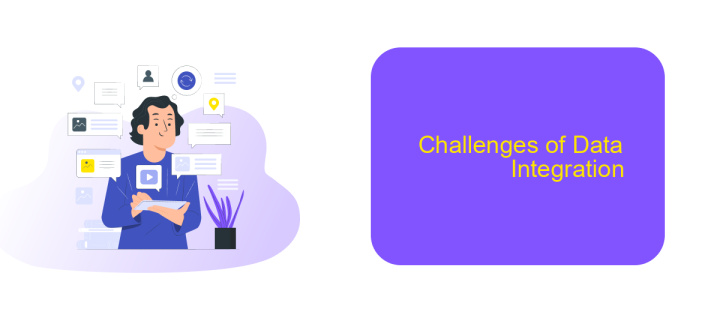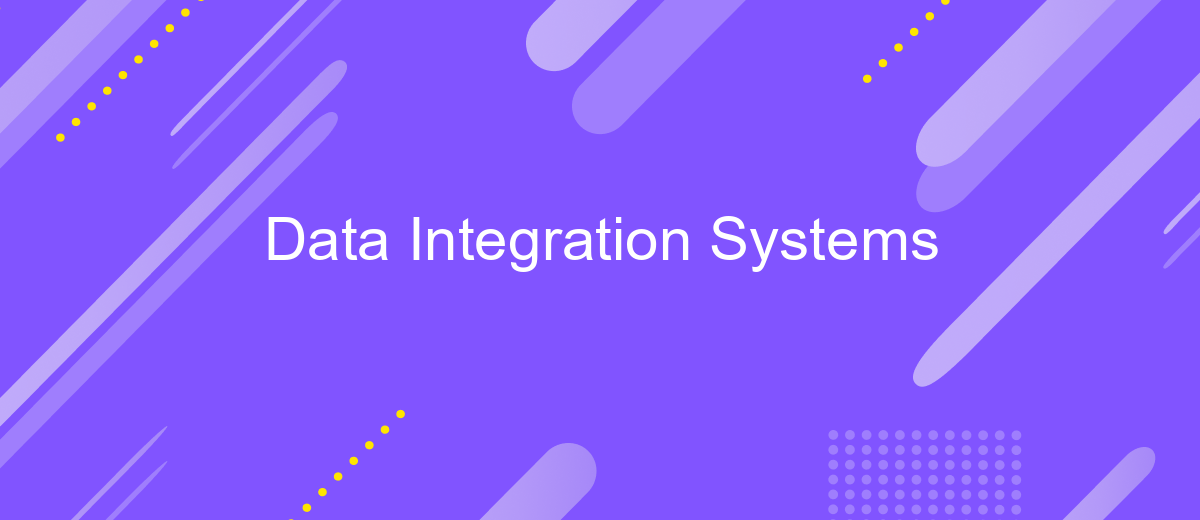Data Integration Systems
Data integration systems are essential tools in today's data-driven world, enabling organizations to combine data from diverse sources into a unified view. These systems facilitate seamless data flow, enhance decision-making, and improve operational efficiency. By leveraging advanced algorithms and technologies, data integration systems ensure that businesses can access accurate, timely, and relevant information, driving innovation and competitive advantage.
Introduction
Data Integration Systems play a crucial role in today's data-driven world, enabling seamless data flow between disparate sources. These systems facilitate the consolidation of data from various databases, applications, and platforms, ensuring that organizations can access and analyze their data holistically. The growing complexity and volume of data necessitate robust integration solutions to maintain data integrity and enhance decision-making processes.
- Streamlined data consolidation from multiple sources
- Enhanced data accuracy and consistency
- Improved decision-making capabilities
- Reduced manual data handling and errors
One notable service that simplifies the setup of data integrations is ApiX-Drive. This platform offers a user-friendly interface and supports a wide range of integrations, making it easier for businesses to connect their data sources without extensive technical expertise. By leveraging tools like ApiX-Drive, organizations can efficiently manage their data ecosystems, ensuring real-time data availability and fostering a more agile business environment.
Components of a Data Integration System

A Data Integration System consists of several key components that work together to ensure seamless data flow between different sources and destinations. The primary components include data sources, data connectors, a data transformation engine, and a central data repository. Data sources can be databases, APIs, flat files, or cloud services that store the raw data. Data connectors are responsible for extracting data from these sources and feeding it into the integration system. The data transformation engine processes and converts the extracted data into a format suitable for the target system, ensuring consistency and compatibility.
Another crucial component is the data integration platform, which orchestrates the entire process. Tools like ApiX-Drive facilitate the setup of integrations by providing a user-friendly interface and pre-built connectors for various applications. This platform also includes monitoring and error-handling mechanisms to ensure data integrity and reliability. Finally, the central data repository stores the processed data, making it accessible for analysis and reporting. Together, these components create a robust framework for efficient and effective data integration, enabling organizations to leverage their data assets fully.
Benefits of Data Integration

Data integration is a critical component for modern businesses, enabling them to unify disparate data sources into a cohesive system. This process not only simplifies data management but also enhances decision-making capabilities by providing a comprehensive view of organizational data.
- Improved Data Quality: By integrating data from multiple sources, organizations can eliminate redundancies and inconsistencies, ensuring cleaner and more accurate data.
- Enhanced Collaboration: Data integration fosters better collaboration across departments by providing a unified data view, making it easier for teams to work together effectively.
- Cost Efficiency: Streamlining data management processes reduces the need for multiple data storage solutions, thereby cutting costs associated with data maintenance and storage.
- Faster Decision-Making: Integrated data systems provide real-time access to critical information, enabling quicker and more informed decision-making.
- Scalability: Data integration systems are designed to grow with your business, easily accommodating increasing volumes of data and new data sources.
Tools like ApiX-Drive simplify the process of data integration by automating the connection between various applications and services. This ensures that data flows seamlessly and securely across your systems, allowing you to focus on leveraging insights rather than managing data pipelines. By utilizing such tools, businesses can achieve efficient and effective data integration, driving better outcomes and fostering innovation.
Challenges of Data Integration

Data integration poses several challenges that organizations must address to ensure seamless and efficient operations. One of the primary issues is data inconsistency, where data from different sources may not align in format, structure, or meaning. This can lead to inaccuracies and misinterpretations, complicating decision-making processes.
Another significant challenge is data security. Integrating data from multiple sources often involves transferring sensitive information across various platforms, increasing the risk of data breaches and unauthorized access. Organizations must implement robust security measures to protect their data assets.
- Data inconsistency
- Data security
- Scalability issues
- Data transformation complexity
To overcome these challenges, organizations can leverage integration services like ApiX-Drive. This platform simplifies the process by automating data transfers between different systems, ensuring data consistency and security. By using such tools, businesses can focus on their core operations while maintaining reliable and secure data integration.


Conclusion
In conclusion, data integration systems play a pivotal role in modern business environments by streamlining data from diverse sources into a unified view. These systems enhance decision-making, improve operational efficiency, and support comprehensive analytics. Effective data integration ensures that organizations can leverage their data assets to drive growth and innovation. The ability to seamlessly connect various data points is crucial for maintaining a competitive edge in today's data-driven world.
Services like ApiX-Drive simplify the process of setting up and managing data integrations. By providing a user-friendly interface and robust automation features, ApiX-Drive allows businesses to effortlessly connect different applications and data sources. This not only reduces the complexity of integration projects but also saves valuable time and resources. As technology continues to evolve, leveraging such tools will be essential for organizations looking to optimize their data strategies and maintain operational agility.
FAQ
What is a Data Integration System?
Why is Data Integration important for businesses?
What are the common challenges faced in Data Integration?
How can businesses automate Data Integration processes?
What are the benefits of using an integration platform like ApiX-Drive?
Apix-Drive will help optimize business processes, save you from a lot of routine tasks and unnecessary costs for automation, attracting additional specialists. Try setting up a free test connection with ApiX-Drive and see for yourself. Now you have to think about where to invest the freed time and money!

